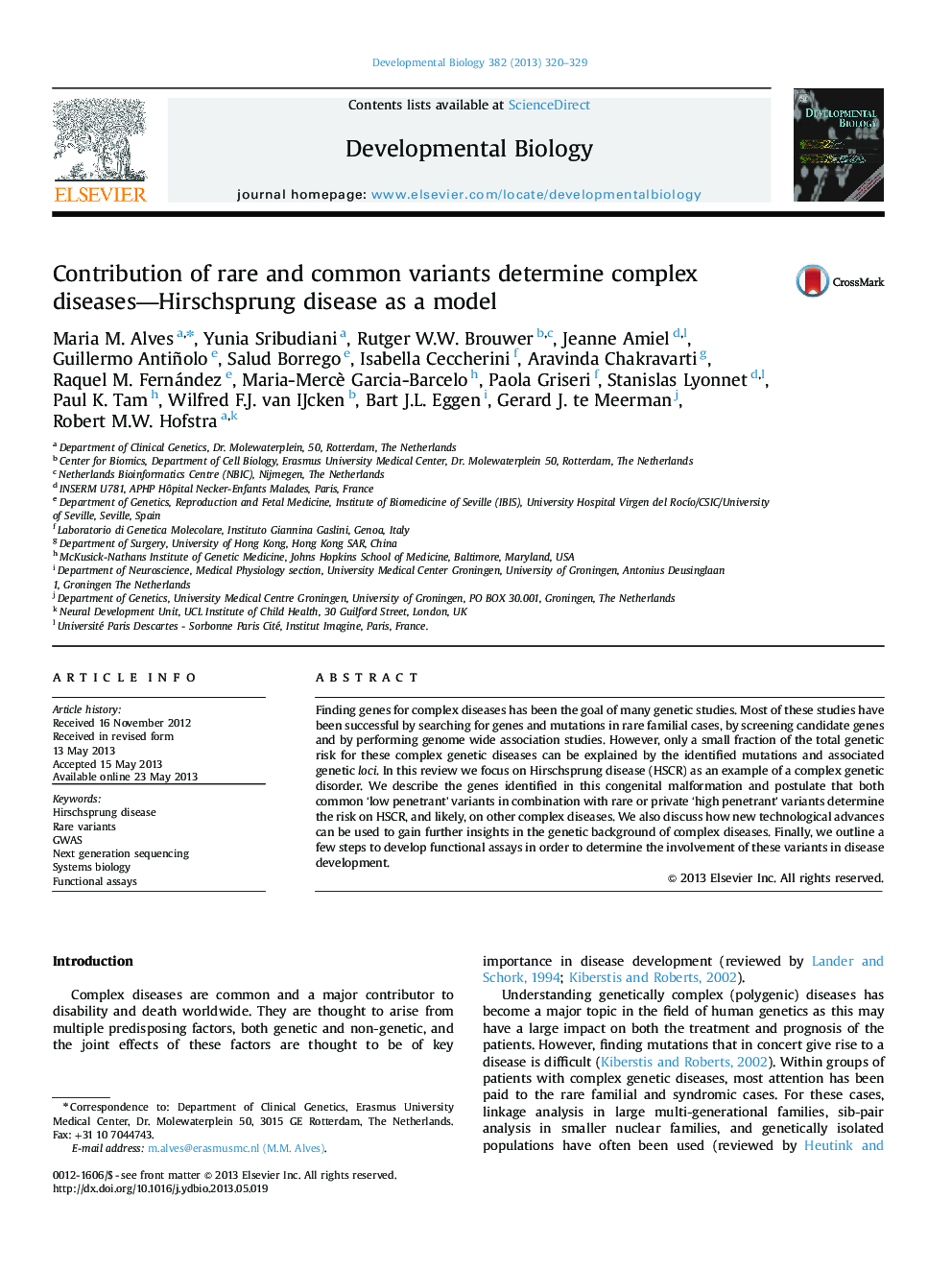| Article ID | Journal | Published Year | Pages | File Type |
|---|---|---|---|---|
| 10932073 | Developmental Biology | 2013 | 10 Pages |
Abstract
Finding genes for complex diseases has been the goal of many genetic studies. Most of these studies have been successful by searching for genes and mutations in rare familial cases, by screening candidate genes and by performing genome wide association studies. However, only a small fraction of the total genetic risk for these complex genetic diseases can be explained by the identified mutations and associated genetic loci. In this review we focus on Hirschsprung disease (HSCR) as an example of a complex genetic disorder. We describe the genes identified in this congenital malformation and postulate that both common 'low penetrant' variants in combination with rare or private 'high penetrant' variants determine the risk on HSCR, and likely, on other complex diseases. We also discuss how new technological advances can be used to gain further insights in the genetic background of complex diseases. Finally, we outline a few steps to develop functional assays in order to determine the involvement of these variants in disease development.
Keywords
Related Topics
Life Sciences
Biochemistry, Genetics and Molecular Biology
Cell Biology
Authors
Maria M. Alves, Yunia Sribudiani, Rutger W.W. Brouwer, Jeanne Amiel, Guillermo Antiñolo, Salud Borrego, Isabella Ceccherini, Aravinda Chakravarti, Raquel M. Fernández, Maria-Mercè Garcia-Barcelo, Paola Griseri, Stanislas Lyonnet, Paul K. Tam,
